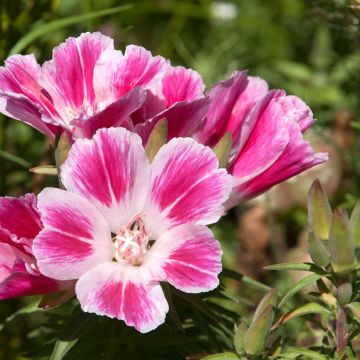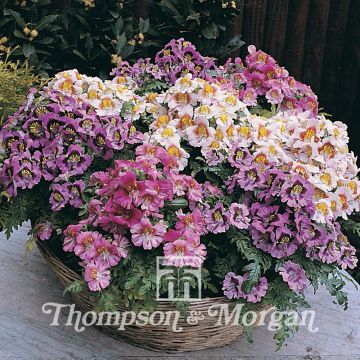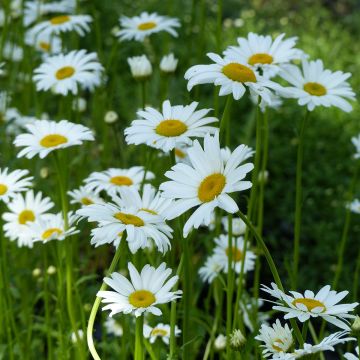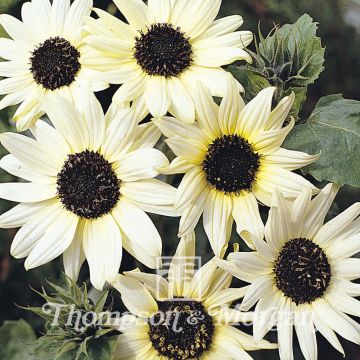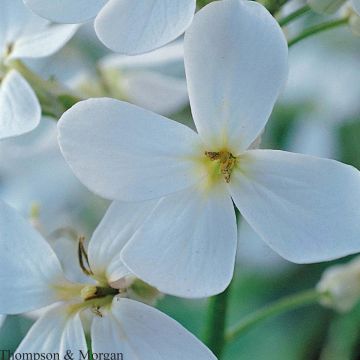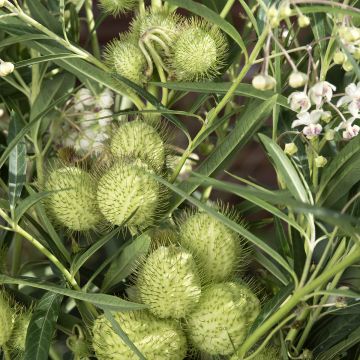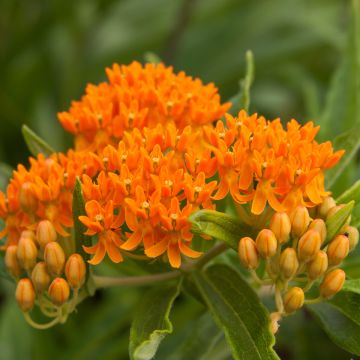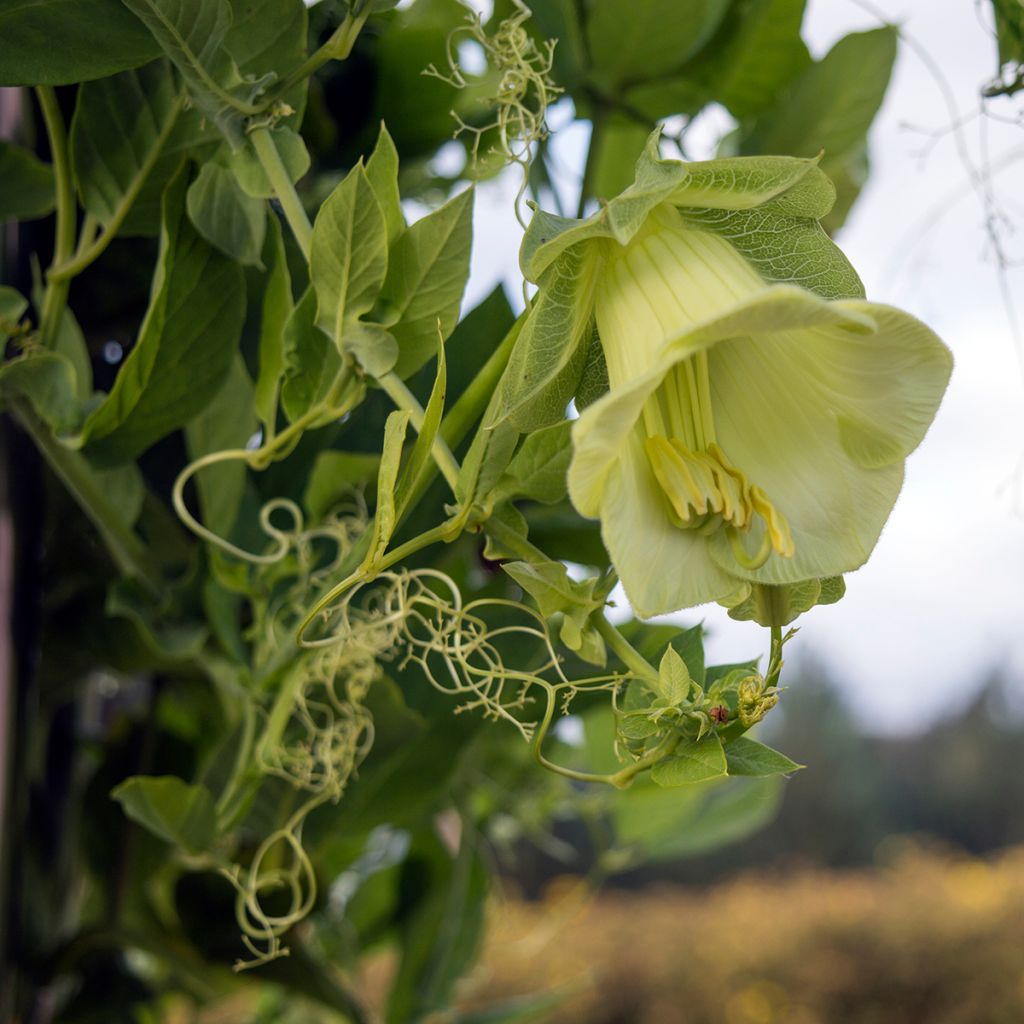

Cobaea scandens Climbing White Seeds


Cobaea scandens Climbing White Seeds
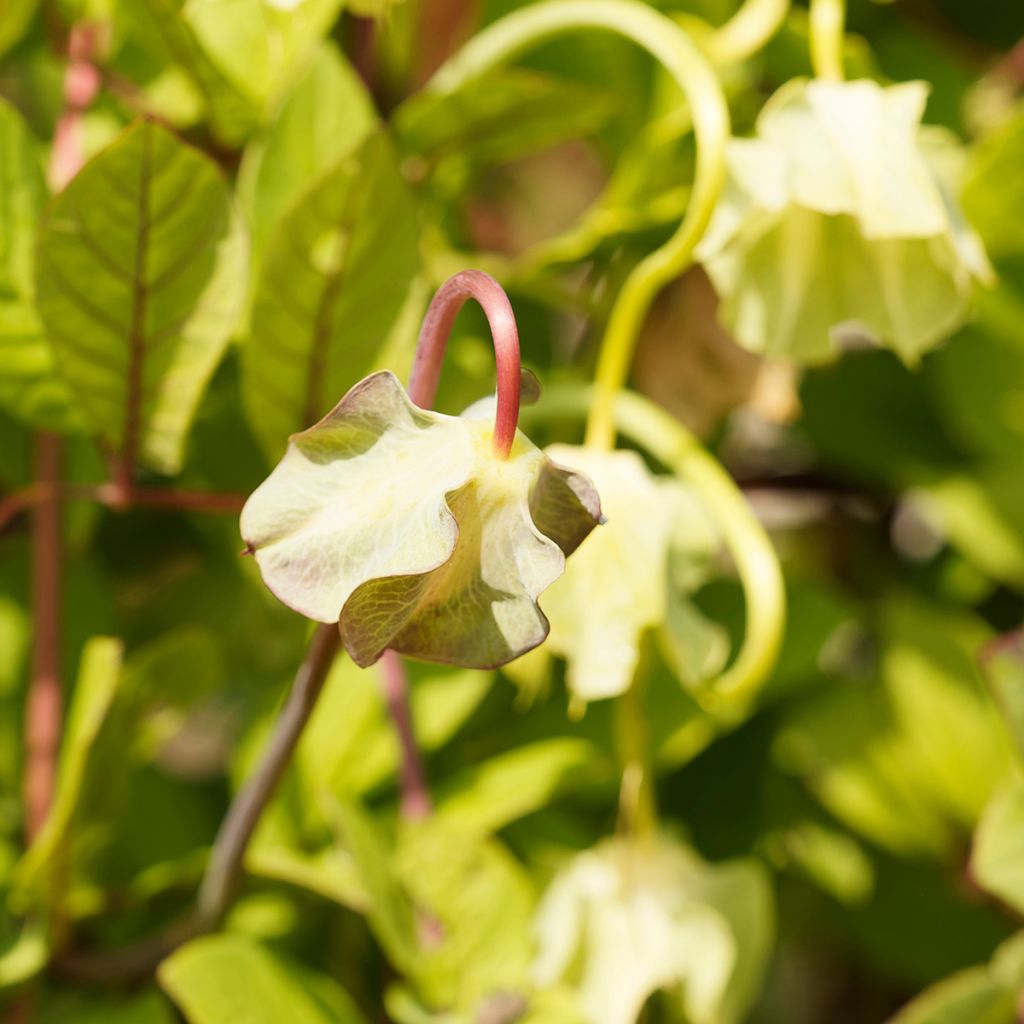

Cobaea scandens Climbing White Seeds


Cobaea scandens Climbing White Seeds
Cobaea scandens Climbing White Seeds
Cobea scandens Alba
Cup and Saucer Vine
This item cannot be shipped to the selected country
Dispatch by letter from €3.90
More information
Schedule delivery date,
and select date in basket
This plant carries a 6 months recovery warranty
More information
We guarantee the quality of our plants for a full growing cycle, and will replace at our expense any plant that fails to recover under normal climatic and planting conditions.
Seed-only orders are dispatched by sealed envelope. The delivery charge for seed-only orders is €3.90.
Does this plant fit my garden?
Set up your Plantfit profile →
Description
Cobaea scandens Alba, also known as Climbing Cobaea, is a vigorous climbing plant with a slightly retro charm. This spectacular variety displays delicious white bell-shaped flowers that become cream-coloured from summer to autumn, nestled in lush and deep green foliage. It clings to its support with long, branched tendrils like those of peas. A frost-tender perennial, it is grown as an annual, in well-exposed, rich, moist but well-drained soil. It will quickly and beautifully cover any support you provide and can also be grown in a pot.
Originally from tropical and subtropical regions of the Americas, especially central Mexico, Cobaea scandens is a fast-growing herbaceous perennial vine belonging to the Polemoniaceae family, which is grown as an annual. It reaches a height of 3 m (9.8 ft) and a width of about 1 m (3.3 ft) in a single growing season. It bears dense, dark green, evergreen foliage on its slender stems. The leaves are compound, consisting of 3 pairs of 10 cm (3.9 in) long leaflets with veins. The terminal leaflet is transformed into a forked tendril that allows the plant to cling. Flowering starts in August, rarely earlier, and continues into autumn until the first frost. Bell-shaped flowers, measuring 7 to 8 cm (2.8 to 3.1 in) long, with recurved or retrorse lips, appear in the leaf axils. These flowers are initially white-greenish, then open to white before turning cream-coloured, revealing a cluster of yellow stamens. They are followed by the formation of an ovoid fruit containing seeds.
Climbing Cobaea is ideal for quickly covering a trellis, pergola, fence, or gate. But its old-fashioned charm makes it even more invaluable for covering an old stone wall or well, or cascading down a terraced garden. It excels among the September blooms, as the summer flowers decline and the soft light plays through its bell-shaped flowers. Mix the Alba variety and the classic variety on the same support as their colours harmonise beautifully. Plant blue, pink, and white asters, as well as hardy chrysanthemums, at their base to create a truly romantic tableau.
Report an error about the product description
Cobaea scandens Climbing White Seeds in pictures


Flowering
Foliage
Plant habit
Botanical data
Cobea
scandens
Alba
Polemoniaceae
Cup and Saucer Vine
South America
Other Thompson and Morgan seeds
Planting and care
Soak the seeds of Climbing Cobaea for 2 hours in warm water before sowing. Sow in late winter or early spring at 18-24°C (64.4-75.2°F) in good potting soil. Cover the seeds with a thin layer of soil. Keep the soil moist but not waterlogged, for example by enclosing the seedling in a polyethylene bag. Germination usually takes 21 to 30 days. When the seedlings are large enough to handle, transplant them into 13 cm (5.1 in) pots, in cooler conditions, watering regularly. Then gradually acclimatise them to outdoor conditions for 10-15 days before planting them in the ground after all risk of frost is over, spacing the plants 60 cm (23.6 in) apart. Choose a sheltered, sunny, and warm location, with ordinary but well-drained soil. Plants grown in pots in a greenhouse should benefit from a humid atmosphere. If the flowers are hidden by the foliage, it is perfectly possible to prune it lightly. Avoid planting in overly rich soil, as this will promote foliage growth at the expense of flowering. The soil should remain moist but well drained. In pots, use good-quality potting soil that retains water.
Sowing period
Intended location
-
, onOrder confirmed
Reply from on Promesse de fleurs
Flower seeds
Haven't found what you were looking for?
Hardiness is the lowest winter temperature a plant can endure without suffering serious damage or even dying. However, hardiness is affected by location (a sheltered area, such as a patio), protection (winter cover) and soil type (hardiness is improved by well-drained soil).

Photo Sharing Terms & Conditions
In order to encourage gardeners to interact and share their experiences, Promesse de fleurs offers various media enabling content to be uploaded onto its Site - in particular via the ‘Photo sharing’ module.
The User agrees to refrain from:
- Posting any content that is illegal, prejudicial, insulting, racist, inciteful to hatred, revisionist, contrary to public decency, that infringes on privacy or on the privacy rights of third parties, in particular the publicity rights of persons and goods, intellectual property rights, or the right to privacy.
- Submitting content on behalf of a third party;
- Impersonate the identity of a third party and/or publish any personal information about a third party;
In general, the User undertakes to refrain from any unethical behaviour.
All Content (in particular text, comments, files, images, photos, videos, creative works, etc.), which may be subject to property or intellectual property rights, image or other private rights, shall remain the property of the User, subject to the limited rights granted by the terms of the licence granted by Promesse de fleurs as stated below. Users are at liberty to publish or not to publish such Content on the Site, notably via the ‘Photo Sharing’ facility, and accept that this Content shall be made public and freely accessible, notably on the Internet.
Users further acknowledge, undertake to have ,and guarantee that they hold all necessary rights and permissions to publish such material on the Site, in particular with regard to the legislation in force pertaining to any privacy, property, intellectual property, image, or contractual rights, or rights of any other nature. By publishing such Content on the Site, Users acknowledge accepting full liability as publishers of the Content within the meaning of the law, and grant Promesse de fleurs, free of charge, an inclusive, worldwide licence for the said Content for the entire duration of its publication, including all reproduction, representation, up/downloading, displaying, performing, transmission, and storage rights.
Users also grant permission for their name to be linked to the Content and accept that this link may not always be made available.
By engaging in posting material, Users consent to their Content becoming automatically accessible on the Internet, in particular on other sites and/or blogs and/or web pages of the Promesse de fleurs site, including in particular social pages and the Promesse de fleurs catalogue.
Users may secure the removal of entrusted content free of charge by issuing a simple request via our contact form.
The flowering period indicated on our website applies to countries and regions located in USDA zone 8 (France, the United Kingdom, Ireland, the Netherlands, etc.)
It will vary according to where you live:
- In zones 9 to 10 (Italy, Spain, Greece, etc.), flowering will occur about 2 to 4 weeks earlier.
- In zones 6 to 7 (Germany, Poland, Slovenia, and lower mountainous regions), flowering will be delayed by 2 to 3 weeks.
- In zone 5 (Central Europe, Scandinavia), blooming will be delayed by 3 to 5 weeks.
In temperate climates, pruning of spring-flowering shrubs (forsythia, spireas, etc.) should be done just after flowering.
Pruning of summer-flowering shrubs (Indian Lilac, Perovskia, etc.) can be done in winter or spring.
In cold regions as well as with frost-sensitive plants, avoid pruning too early when severe frosts may still occur.
The planting period indicated on our website applies to countries and regions located in USDA zone 8 (France, United Kingdom, Ireland, Netherlands).
It will vary according to where you live:
- In Mediterranean zones (Marseille, Madrid, Milan, etc.), autumn and winter are the best planting periods.
- In continental zones (Strasbourg, Munich, Vienna, etc.), delay planting by 2 to 3 weeks in spring and bring it forward by 2 to 4 weeks in autumn.
- In mountainous regions (the Alps, Pyrenees, Carpathians, etc.), it is best to plant in late spring (May-June) or late summer (August-September).
The harvesting period indicated on our website applies to countries and regions in USDA zone 8 (France, England, Ireland, the Netherlands).
In colder areas (Scandinavia, Poland, Austria...) fruit and vegetable harvests are likely to be delayed by 3-4 weeks.
In warmer areas (Italy, Spain, Greece, etc.), harvesting will probably take place earlier, depending on weather conditions.
The sowing periods indicated on our website apply to countries and regions within USDA Zone 8 (France, UK, Ireland, Netherlands).
In colder areas (Scandinavia, Poland, Austria...), delay any outdoor sowing by 3-4 weeks, or sow under glass.
In warmer climes (Italy, Spain, Greece, etc.), bring outdoor sowing forward by a few weeks.


































